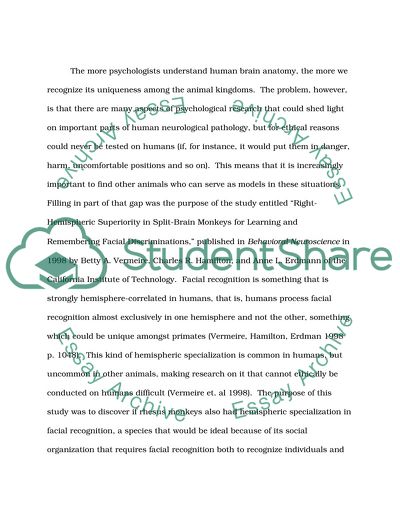Cite this document
(Right Hemispheric Superiority in Split-Brain Monkeys Report Example | Topics and Well Written Essays - 1250 words, n.d.)
Right Hemispheric Superiority in Split-Brain Monkeys Report Example | Topics and Well Written Essays - 1250 words. https://studentshare.org/psychology/1775160-the-left-brain-vs-the-right-brain-which-part-dominates
Right Hemispheric Superiority in Split-Brain Monkeys Report Example | Topics and Well Written Essays - 1250 words. https://studentshare.org/psychology/1775160-the-left-brain-vs-the-right-brain-which-part-dominates
(Right Hemispheric Superiority in Split-Brain Monkeys Report Example | Topics and Well Written Essays - 1250 Words)
Right Hemispheric Superiority in Split-Brain Monkeys Report Example | Topics and Well Written Essays - 1250 Words. https://studentshare.org/psychology/1775160-the-left-brain-vs-the-right-brain-which-part-dominates.
Right Hemispheric Superiority in Split-Brain Monkeys Report Example | Topics and Well Written Essays - 1250 Words. https://studentshare.org/psychology/1775160-the-left-brain-vs-the-right-brain-which-part-dominates.
“Right Hemispheric Superiority in Split-Brain Monkeys Report Example | Topics and Well Written Essays - 1250 Words”. https://studentshare.org/psychology/1775160-the-left-brain-vs-the-right-brain-which-part-dominates.


